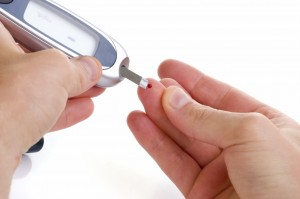Diabetes occurs due to the lack of insulin produced by the pancreas. This is a medical condition which results in the inability to metabolize carbohydrates, fats and proteins.
Many patients deal with their condition by keeping their diet in check and self-administering insulin. However, in most cases, patients may experience a drastic drop in blood sugar levels requiring prompt help. The condition is called hypoglycemia and must be dealt with immediately.

Signs and symptoms
- Fatigue and weakness
- Loss of concentration
- Abdominal pain
- Nausea or vomiting
- Loss of coordination or dizziness
- Persistent headaches
- Behavioral changes: irritability and anger problems
- Profuse sweating, clammy or pale skin
- Unconsciousness if not treated quickly
Treatment
1. If the casualty is unconscious:
- Allow the person to rest in his recovery position—i.e. rest on his side
- Call an ambulance
- Do not give him anything to drink or eat
2. If the patient is conscious:
- Give the casualty some sugar—this can be a sugary drink, a piece of candy—anything that can be easily swallowed or can be sucked on. The patient will show some improvement within a few minutes.
- If the patient is fully conscious and alert, allow him to have a carbohydrate-rich meal such as several biscuits or a sandwich.
3. Seek medical help
- Even if the casualty shows some improvement after having a sugary snack, medical assistance is mandatory as he may suffer from the condition again after a period of time.
- If the patient does not show any signs of improvement even with the consumption of sugary snacks or drinks, call an ambulance immediately.
- Do not administer insulin treatment as it may be dangerous without a blood test or medical assessment.
Where to Learn More
To learn more about sudden medical emergencies such as hypoglycaemia or hyperglycaemia enrol in St Mark James first aid training with one of our training providers. Candidates enrolled in either standard, emergency or childcare first aid programs will be introduced recognizing and managing diabetic emergencies.
Related Video on Diabetes
